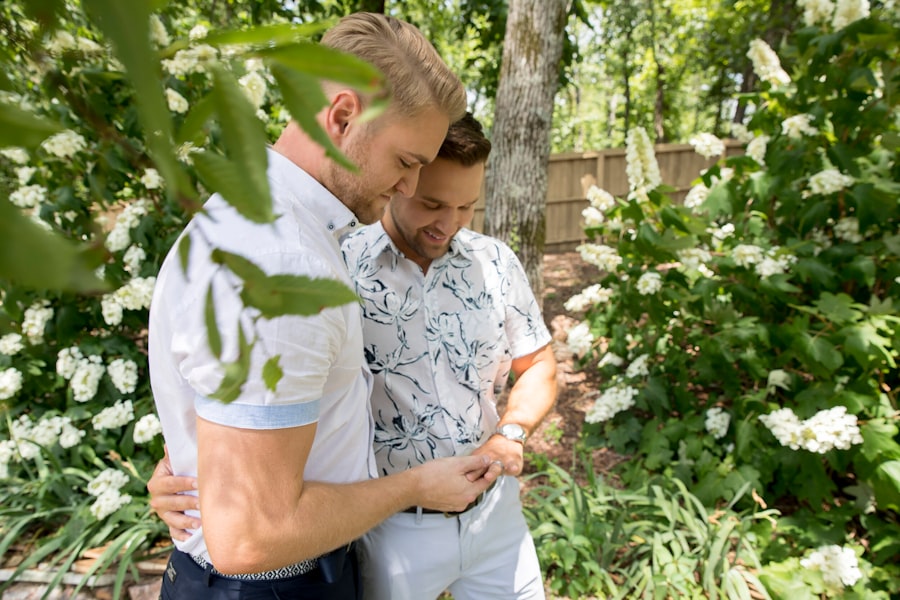Marriage in Scotland holds a unique place within the cultural and legal framework of the nation. It is not merely a union between two individuals; it is a celebration of love, commitment, and often, family ties. The Scottish approach to marriage is steeped in tradition, yet it has evolved significantly over the years, reflecting broader societal changes.
From the picturesque ceremonies held in historic castles to intimate gatherings in local churches, the diversity of marriage practices in Scotland showcases the rich tapestry of its cultural heritage. As you delve into the intricacies of marriage in Scotland, you will discover that it is governed by specific laws that distinguish it from other parts of the United Kingdom. The Marriage (Scotland) Act 1977 laid down the legal framework for marriage, allowing for both civil and religious ceremonies.
This legislation has been pivotal in shaping how marriages are conducted, ensuring that they are recognised legally while also respecting the diverse beliefs and customs of the Scottish people. Understanding these foundations is essential as you explore the evolving landscape of marriage in contemporary Scotland.
Summary
- Marriage in Scotland has a rich history and is an important institution in Scottish society.
- The marriage rate in Scotland has been declining in recent years, with more people choosing to cohabit instead of getting married.
- The average age of marriage in Scotland has been increasing, with more people choosing to marry later in life.
- There are regional variations in marriage rates in Scotland, with some areas having higher rates of marriage than others.
- Same-sex marriage has become increasingly common in Scotland, reflecting changing attitudes towards marriage and equality in society.
Marriage Trends and Statistics in Scotland
In recent years, marriage trends in Scotland have exhibited notable shifts, reflecting changing societal norms and values. According to the latest statistics, there has been a gradual decline in the number of marriages taking place annually. This trend can be attributed to various factors, including changing attitudes towards commitment, economic considerations, and the increasing acceptance of cohabitation without formal marriage.
As you examine these statistics, it becomes evident that the traditional view of marriage is being redefined. Moreover, the rise of alternative family structures has contributed to this decline. Many individuals now prioritise personal development and career advancement before considering marriage.
This shift is particularly pronounced among younger generations, who often view marriage as one option among many rather than a definitive life goal. As you reflect on these trends, it is crucial to consider how they may influence future generations’ perceptions of marriage and relationships in Scotland.
Average Age of Marriage in Scotland

The average age at which individuals marry in Scotland has steadily increased over the past few decades. Currently, men tend to marry at around 36 years old, while women typically tie the knot at approximately 34 years old. This shift towards later marriages can be attributed to several factors, including increased educational opportunities, career aspirations, and a greater emphasis on personal fulfilment before settling down.
As you contemplate these changes, it becomes clear that societal expectations surrounding marriage have transformed significantly. This trend towards marrying later in life also reflects a broader cultural shift towards individualism. Many people now prioritise establishing their identities and achieving personal goals before entering into a lifelong commitment.
This evolution in attitudes towards marriage may lead to more mature partnerships, as individuals bring greater life experience and emotional readiness into their relationships. However, it also raises questions about how these changes will impact family structures and child-rearing practices in the future.
Regional Variations in Marriage Rates
Scotland’s diverse geography and cultural landscape contribute to regional variations in marriage rates across the country. In urban areas such as Edinburgh and Glasgow, marriage rates tend to be lower compared to rural regions. This disparity can be attributed to various factors, including lifestyle choices, economic conditions, and social norms prevalent in different communities.
As you explore these regional differences, you will gain insight into how local cultures shape attitudes towards marriage. In rural areas, traditional values often hold more sway, leading to higher marriage rates among younger individuals. Conversely, urban centres may see a greater prevalence of cohabitation and delayed marriages as people navigate busy lifestyles and career demands.
These regional variations highlight the importance of understanding local contexts when examining marriage trends in Scotland.
As you consider these differences, think about how they reflect broader societal changes and what they might mean for the future of marriage in various communities.
Marital Status and Cohabitation Trends
Cohabitation has become an increasingly popular alternative to traditional marriage in Scotland. Many couples now choose to live together without formalising their relationship through marriage, reflecting changing attitudes towards commitment and partnership.
This trend is particularly evident among younger generations who often view cohabitation as a practical step before considering marriage or as a viable long-term arrangement in its own right.
As you delve into this phenomenon, you will find that cohabitation is reshaping the landscape of relationships in Scotland. The rise of cohabitation has significant implications for marital status statistics. While traditional marriages may be declining, the number of cohabiting couples continues to grow.
This shift raises important questions about legal rights and protections for those who choose not to marry. As you reflect on these trends, consider how society might need to adapt its legal frameworks to accommodate the changing nature of relationships and ensure that all couples are afforded equal rights and protections under the law.
Divorce Rates and Trends in Scotland

Divorce rates in Scotland have experienced fluctuations over the years, with a notable increase observed during the late 20th century. However, recent statistics indicate a decline in divorce rates, suggesting that couples may be more cautious about entering into marriage or are better equipped to navigate challenges within their relationships. As you examine these trends, it becomes apparent that societal attitudes towards divorce are evolving alongside changing views on marriage itself.
The decline in divorce rates may also reflect a growing awareness of the importance of relationship education and support services available to couples. Many individuals now seek pre-marital counselling or relationship workshops to strengthen their partnerships before making a lifelong commitment. This proactive approach may contribute to more stable marriages and lower divorce rates over time.
As you consider these developments, think about how they might influence future generations’ understanding of both marriage and divorce.
Same-Sex Marriage Statistics in Scotland
The legalisation of same-sex marriage in Scotland in 2014 marked a significant milestone for LGBTQ+ rights and representation within society. Since then, same-sex marriages have steadily increased, reflecting a growing acceptance of diverse relationships within Scottish culture. As you explore these statistics, you will find that same-sex couples are increasingly choosing to formalise their partnerships through marriage, contributing to the overall trends observed in Scottish society.
The rise in same-sex marriages also highlights the importance of inclusivity and equality within the institution of marriage. It serves as a reminder that love knows no boundaries and that all individuals should have the right to celebrate their relationships legally and publicly. As you reflect on these developments, consider how they have transformed societal perceptions of marriage and what this means for future generations seeking recognition and acceptance for their relationships.
Implications of the Latest Marriage Statistics for Scottish Society
The latest marriage statistics present a complex picture of Scottish society as it navigates changing attitudes towards love, commitment, and family structures. The decline in traditional marriages coupled with the rise of cohabitation and same-sex unions suggests a shift towards more diverse forms of relationships that reflect individual choices rather than societal expectations. As you contemplate these implications, consider how they might influence policy decisions regarding family law and social services.
Furthermore, these trends may prompt discussions about the role of marriage within contemporary society. As individuals increasingly prioritise personal fulfilment over traditional commitments, there may be a need for greater support systems for those who choose alternative relationship structures. This could include legal protections for cohabiting couples or enhanced resources for families navigating non-traditional arrangements.
As you reflect on these possibilities, think about how Scottish society can adapt to embrace its evolving landscape while ensuring that all individuals are supported in their choices regarding love and partnership.
For those interested in the evolving trends of wedding ceremonies in Scotland, particularly the increasing popularity of humanist weddings, a related article worth reading can be found at

